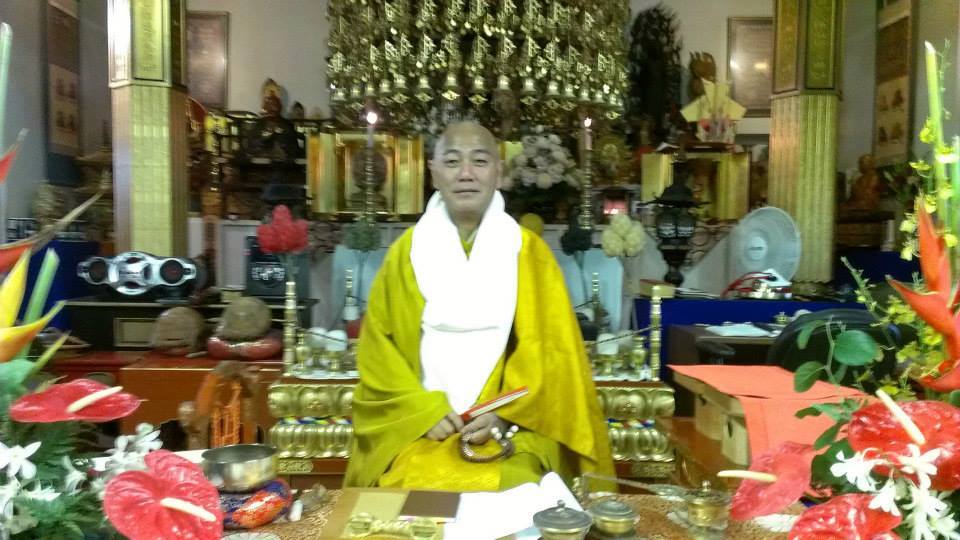For information about the 2024 bon dance, click here.
Koboji Minnyo Kai
The Koboji Minnyo Kai was founded by Archbishop Dean Zenei Okimura. Members of the club preserve the different styles of dance that are performed during the annual Bon Kuyo Odori (Bon Dance). We pass on the many teachings and advice that Dean Sensei entrusted us with. Practices for temple members are held periodically in the downstairs hall. Please contact the office for more information, including details for public practices.
|
Group Founder: Archbishop Dean Zenei Okimura
Group Leader: Reverend Bryan Zenju Yanagihara Instructor: Ms. Sharon Isa Instructor Emerita: Ms. Michie Takemoto Email: [email protected] |
|
Koboji Minnyo Kai Dances Choreographed by Archbishop Dean
*Koyasan Goeika Buyo **Koyasan |
Koyasan Shingon Shu Shuka: Iroha Uta
The song of Koyasan Shingon Shu is Iroha Uta. It is a song beloved by many people. The lyrics were written by Kobo Daishi in the Heian Period. It is famous for using all the Japanese kana without repeating any. The poem writes about the four truths of Buddhist philosophy called catur-arya-satya (skrt.). We begin each practice with Iroha Uta as a tribute to Kobo Daishi. Iroha Uta
As the scent of flowers shall scatter away, Who would be everlasting in our world, Climbing over a deep mountain full of vicissitudes today, I shall neither have shallow dreams nor be intoxicated. |
In the history of Japanese folk dance culture in the islands, there exists a cherished tradition: the respectful acknowledgment of the choreographer's permission before performing a dance. This beautiful custom reflects the essence of courtesy and respect that our seniors have instilled in our community. Regrettably, as times evolve, some of the younger generation may not be aware of these timeless courtesies.
In light of this, we kindly request that performers honor this tradition by seeking permission before presenting one of our dances at a bon dance or performance. Your understanding and adherence to this practice not only uphold the integrity of our art but also honors the collective efforts of those who have crafted these exquisite expressions of culture.
Each of Koboji's dances was meticulously choreographed by Archbishop Dean Okimura, embodying profound Buddhist symbolism. Archbishop Okimura maintained a strict protocol regarding who is permitted to perform Koboji's dances at a bon dance or performance. This careful stewardship ensures that each performance accurately conveys the spiritual significance woven into the movements.
Therefore, we kindly urge performers to honor this legacy by seeking permission before presenting any of Koboji's choreographed dances. Your adherence to this practice not only upholds the authenticity of our art but also pays homage to the profound spiritual journey encapsulated within each movement. Thank you for your understanding and respect for our cherished traditions.
In light of this, we kindly request that performers honor this tradition by seeking permission before presenting one of our dances at a bon dance or performance. Your understanding and adherence to this practice not only uphold the integrity of our art but also honors the collective efforts of those who have crafted these exquisite expressions of culture.
Each of Koboji's dances was meticulously choreographed by Archbishop Dean Okimura, embodying profound Buddhist symbolism. Archbishop Okimura maintained a strict protocol regarding who is permitted to perform Koboji's dances at a bon dance or performance. This careful stewardship ensures that each performance accurately conveys the spiritual significance woven into the movements.
Therefore, we kindly urge performers to honor this legacy by seeking permission before presenting any of Koboji's choreographed dances. Your adherence to this practice not only upholds the authenticity of our art but also pays homage to the profound spiritual journey encapsulated within each movement. Thank you for your understanding and respect for our cherished traditions.

